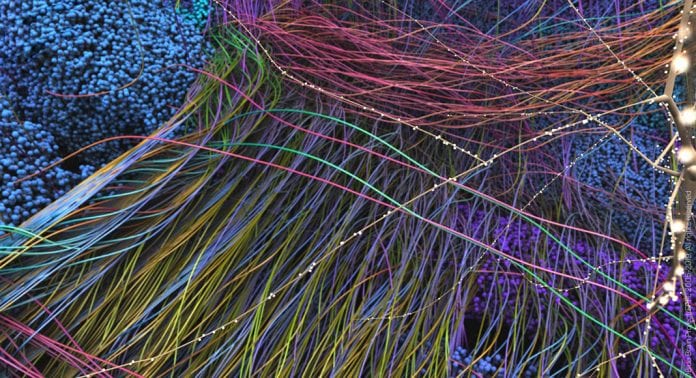
A project that aims to build biologically detailed digital reconstructions and simulations of the rodent, and ultimately the human brain, has found how neurons in the mouse neocortex form billions of synaptic connections.
Researchers who are part of the Blue Brain Project, being conducted at Geneva’s science and technology university, EPFL, were able to generate statistical instances of the micro-connectome of 10 million neurons, a model spanning five orders of magnitude and containing 88 billion synaptic connections.
Identifying the synaptic connections
Before now, comprehensively measuring this connectome has only been successful in small volumes – smaller than the head of a pin. The long-range connectivity formed by long, thin fibres, has only been studied for minimal numbers of individual neurons, giving a rather incomplete picture, as well as on a macro-scale which gives a ‘zoomed-out’ view but not a single-cell resolution.
In order to get a full picture, the researchers have shown that combining these two views it is possible to identify some of the key rules that dictate which individual neurons can form connections over large distances within the neocortex. The structure of these synaptic connections between neurons shapes their activity and function. The data used by the researchers came from the Allen Mouse Brain Connectivity Atlas and Janelia MouseLight – enabling the researchers to identify some of the key rules that dictate which individual neurons can form those connections.
Complex structure at single-cell resolution
The researchers have completed previous work modelling local brain circuits which informed them in parameterising principles of neocortical connectivity and enabled them to generate the statistical connectome instances compatible with them.
They found that at the cellular resolution level a complex structure, that has only been seen between neighbouring synaptic neurons, also works by tying together neurons in different regions of the brain – even at opposite ends of the brain. These instances were comparable to a rule of self-similarity previously found in the human brain through MRI data – meaning they extend all the way down to the level of individual neurons.
Lead researcher Michael Reimann said: “They have been depicted as these blunt cables, connecting or synchronising whole brain regions, but maybe there is more to them, more specific targeting of individual neurons. This is what we learned from just a few, relatively course-grained principles. I expect that with improved methods we will find more in the future”.
Comparing experimental findings
Reimann continued: “We have completed such a first-draft connectome of mouse neocortex by using an improved version of our previously published circuit building pipeline. It has been improved to place neurons in brain-atlas defined 3D spaces instead of hexagonal prisms, taking into account the geometry and cellular composition of individual brain regions.
“The composition was based on data from the open source Blue Brain Cell Atlas. Further constraints were derived from other openly accessible datasets. Additional constraints that are so far unknown are likely to limit long-range connectivity even more. To start a process of iterative refinement, we made the model and data available to the public”.
Advancing the case for Simulation
The simulation method allowed the scientists to target volumes several orders of magnitude smaller than would be possible with experimental methods. This allows for the simulation of the electrical activity of individual neurons, entire regions or of the entire neocortex.
Blue Brain Founder and Director Prof. Henry Markram said: “This paper builds upon Blue Brain’s earlier work on evaluating morphological constraints on connectivity, Morphological Diversity Strongly Constrains Synaptic Connectivity and Plasticity, and Reconstruction and Simulation of Neocortical Microcircuitry. The findings enable us continue our simulation experiments at an exponentially increasing rate meaning, we can now build biologically accurate brain models of bigger and bigger brain regions and at a higher and higher resolution thereby further advancing the case for simulation”.























